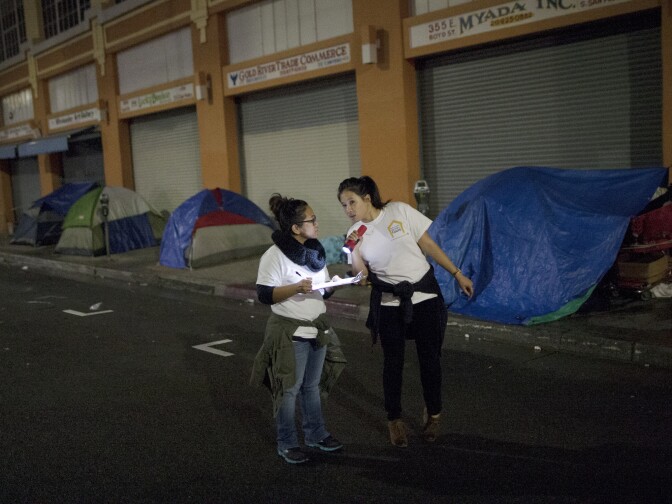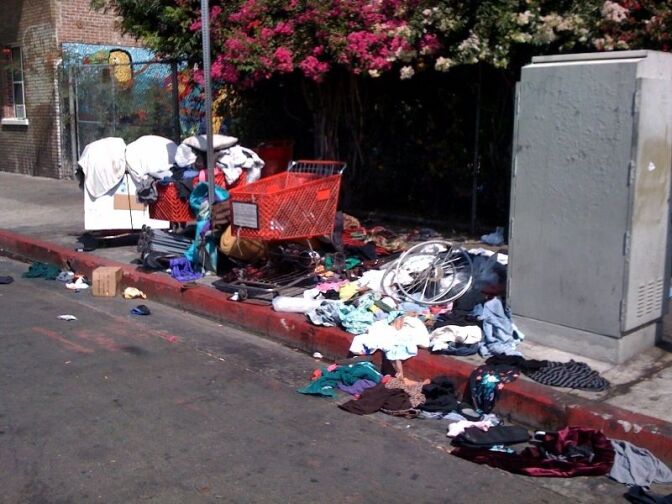With our free press under threat and federal funding for public media gone, your support matters more than ever. Help keep the LAist newsroom strong, become a monthly member or increase your support today.
As homelessness increases in LA, temporary housing disappears
Monday's surprise announcement that the number of homeless counted in Los Angeles County's bi-annual census is growing highlights a shift in policy: a decrease in temporary housing meant to help the homeless get their lives together before moving into permanent homes.
The so called "sheltered" homeless population in the county (excluding Long Beach, Glendale, and Pasadena, which do their own counts) dropped by nearly 1,000, from 14,327 in 2013 to 13,341 this year.
"I saw a lot of the transitional programs collapse," said Tara Nierenhausen, executive director of Community's Child, Inc., a group that shelters homeless women and their young children for up to two years.
Her program is funded by private donations. As a result, it's one of few available in the South Bay, which saw a 39 percent jump in the homeless population since 2013.
"A lot shut down because they didn't have funding or they had government funding and that funding dried up," she said. Community's Child had to turn away 41 families last year - either for lack of space, or because their children were too old. That number has grown, she said, as transitional programs disappear.
Peter Lynn, head of the Los Angeles Homeless Services Authority, said the loss of transitional housing explains the drop in "sheltered" homeless in the homeless census.
He said programs are disappearing because the U.S. Department of Housing and Urban Development has shifted its focus - and funding - toward permanent housing. Federal funds make up much of the government money spent on helping the homeless.
"It's an older program model that was essentially designed to prepare people for housing because they were deemed not ready," he said. "More current models tend to move people directly into supportive housing."
The so-called "housing first" model doesn't require people to get sober, find jobs, or participate in life skills classes as a precondition for housing.
The philosophy is two-fold: for those who can eventually become self-sufficient, the idea is that the stability of permanent housing will help them get back on their feet. For those who will need life-long services, housing first is supposed to connect them with the services they need in addition to providing a place to live.
The prior theory was that substance abuse therapy and life skills training under a short-term stable roof would help people get to the point where they could find their own housing.
Los Angeles City Councilman Mike Bonin represents Venice, where homelessness has been growing. He said he understands the new philosophy - but it'll take a long time to build enough housing.
"In the meantime, we don't give anyone an opportunity for anything other than sleeping on the sidewalk," he said. He wants the city to build more shelters.
This year's count showed 44, 359 homeless in Los Angeles County - 31,018 of them "unsheltered," living under bridges or cardboard boxes, in tent encampments, RV's and cars. That's 12 percent higher than the last count two years ago, but a record number of volunteers went out this year to conduct the survey, which may have an effect on the numbers.










